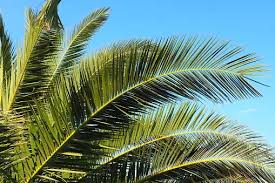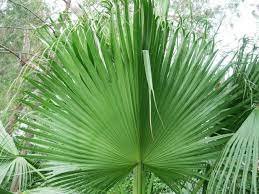Dates leaves, also known as date leaves or palm fronds, are the elongated, feather-like leaves that grow on the date palm tree (Phoenix dactylifera). These leaves are a distinctive feature of the date palm tree and play various important roles in both the tree’s life cycle and human culture.
Dates leaves are typically long and slender, ranging from 10 to 20 feet (3 to 6 meters) in length. They are composed of numerous leaflets or pinnae, which are arranged in a feather-like pattern along a central stem called a rachis. The leaflets are usually green, but they can vary in color and may turn yellow or brown as they age.
Each dates leaf consists of a central rachis that extends outward from the tree’s crown. The rachis bears numerous leaflets on both sides, which are attached to it by small stems called petioles. The leaflets are narrow, elongated, and often have a slight curve.
Like all leaves, dates leaves play a crucial role in photosynthesis, where they convert sunlight into energy and help the tree produce its fruit, the dates. Date palm leaves provide natural shade to the tree’s trunk, roots, and surrounding area, helping to protect the palm from excessive heat and sun exposure. Dates leaves have been used by humans for centuries in various cultures for making products such as baskets, mats, and thatch roofs. They are also used in religious ceremonies and cultural celebrations in some regions.
Dates leaves are not permanent and have a finite lifespan. They are continually produced from the top of the tree and eventually die, turning brown and drying out. These dead leaves, known as “palm fronds” or “palm leaves,” are often pruned and removed from the tree to maintain its health and appearance.
Dates leaves hold cultural significance in many regions where date palms are grown. They are used in various traditional crafts and art forms and are often associated with hospitality and welcome. Additionally, they have historical and symbolic importance in religious and cultural ceremonies in certain societies.
Date palm leaves are an integral part of the date palm tree, serving multiple functions in the tree’s life and holding cultural and practical value for humans in various ways. Their unique appearance and versatility have made them a distinctive feature of landscapes in regions where date palms thrive.
The Economic Importance and Uses of Dates Leaves

Date palm leaves have several economic and practical uses, making them valuable in various industries and daily life.
Here are some of the economic importance and uses of date palm leaves:
1. Thatching Material: Dates leaves are commonly used as a traditional thatching material for roofing in many regions. They are durable, provide insulation, and are readily available in date palm-growing areas. Thatched roofs are often used in rural construction, especially in arid and tropical climates.
2. Basket Weaving: Dates leaves are excellent for weaving baskets, mats, and other handicrafts. These products have cultural and economic significance as they can be sold locally or as souvenirs to tourists. The skill of basket weaving also provides employment opportunities.
3. Fodder: In some regions, dates leaves are used as fodder for livestock. They are especially useful during dry seasons when other food sources for animals are scarce. This can help sustain livestock, which is crucial for the agricultural economy.
4. Fuel: Dried date palm leaves are used as fuel for cooking and heating in many areas. They burn well and provide a readily available source of energy for households, reducing the need for other types of fuel.
Read Also: Dates Crown: Economic Importance, Uses and By-Products
5. Handicrafts and Artwork: Date palm leaves are often used in creating various handicrafts and artwork, such as wall hangings, sculptures, and traditional ornaments. These items can be sold in local markets or to tourists, contributing to the income of artisans.
6. Environmental Benefits: Dates leaves can also have environmental significance. When used as mulch in agriculture, they can help conserve soil moisture and improve soil quality. They can also be used in erosion control efforts in areas prone to soil erosion.
7. Construction and Carpentry: Dates leaves can be used in construction as a reinforcing material for mud bricks, providing structural strength to walls. They are also used as scaffolding and temporary structures on construction sites.
8. Traditional Medicine: In some traditional systems of medicine, extracts from date palm leaves are used for various medicinal purposes, including treating skin conditions and as an anti-inflammatory agent. These uses may have economic implications for herbal medicine practitioners and local communities.
9. Cultural and Religious Symbolism: Date palm leaves have cultural and religious significance in many societies. They are often used in celebrations, festivals, and religious ceremonies, contributing to the cultural and social fabric of communities.
10. Erosion Control: Date palm leaves can be used to combat soil erosion in areas prone to land degradation. They can be placed on slopes to slow down the movement of soil and reduce erosion, helping to protect agricultural land and the environment.
The Products and By-products That Can Be Derived From Dates Leaves
Dates leaves, like many other plant materials, can be utilized to produce various products and by-products.
Here’s a list of some of the products and by-products that can be derived from date leaves:
1. Date Leaf Fiber: Date leaves can be processed to extract fibers. These fibers can be used for making ropes, baskets, mats, and various handicrafts.
2. Date Leaf Paper: Date leaves can be pulped and processed into paper. This paper can be used for writing, packaging, or creating decorative items.
3. Date Leaf Biomass: Date leaves can be used as a source of biomass. This biomass can be burned for energy production or used in biofuel production.
4. Date Leaf Extracts: Extracts from date leaves can be obtained and used in the pharmaceutical and cosmetic industries for their potential health and beauty benefits.
5. Date Leaf Mulch/Compost: Chopped or shredded date leaves can be used as mulch in gardens and farms. They can also be composted to create nutrient-rich soil additives.
Read Also: The Interpretation of Soil Test Data
6. Date Leaf Tea: Dried date leaves can be used to make herbal tea, which may have potential health benefits.
7. Date Leaf Vinegar: Date leaves can be used in the fermentation process to produce date leaf vinegar.
8. Date Leaf Handicrafts: Date leaves can be used in traditional handicrafts, such as weaving, to create items like baskets, hats, and mats.
9. Date Leaf Animal Feed: Dried and processed date leaves can be used as fodder for livestock.
10. Date Leaf Charcoal: Date leaves can be charred to produce charcoal, which can be used for cooking or as a source of activated carbon for various applications.
11. Date Leaf Dyes: Date leaves can be used to extract natural dyes for textiles and crafts.
12. Date Leaf Decorations: Date leaves can be used in decorating purposes, such as creating wall hangings, wreaths, and other decorative items.
13. Date Leaf Medicine: Date leaves have been used in traditional medicine for their potential medicinal properties, although more research is needed to confirm their effectiveness.
14. Date Leaf Insulation: Date leaves can be used as insulation material in construction.
15. Date Leaf Incense: Dried date leaves can be used in making incense sticks or cones.
16. Date Leaf Animal Bedding: Shredded date leaves can be used as bedding material for animals.
In conclusion, date palm leaves have a wide range of economic importance and uses, from traditional construction and crafts to providing essential resources like food, fuel, and fodder. They also hold cultural and environmental significance in many regions where date palms are prevalent.
Read Also: Benefits of Automated Farming

